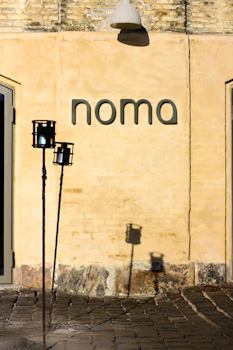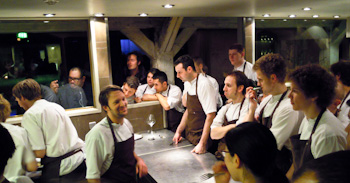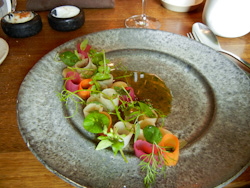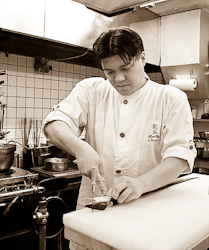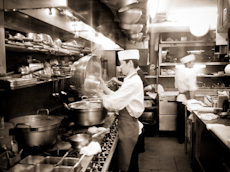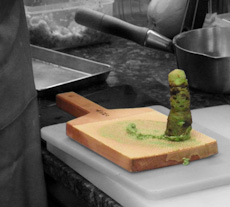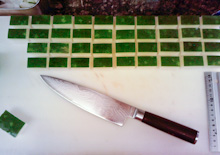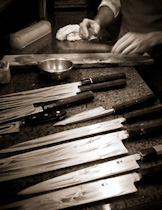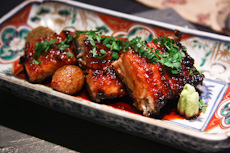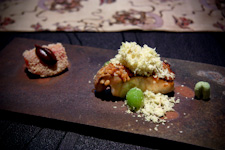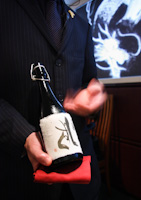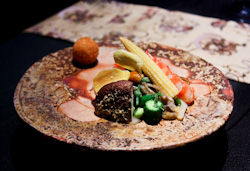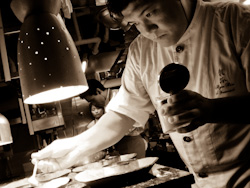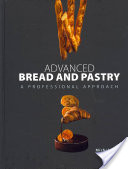What is the New Nordic cuisine?
Most people are at least somewhat familiar with the great cuisines of the world – French cuisine that gives us so many of the techniques we use today, Italian cuisine with its terroir-driven simplicity and the modern Spanish cuisine with its no-limits-liberty approach to harmonizing traditional & new flavors.
Is there space for yet another cuisine, or will introducing another national kitchen bring us to the brink of saturation, subverting cooking in favor of fashion?
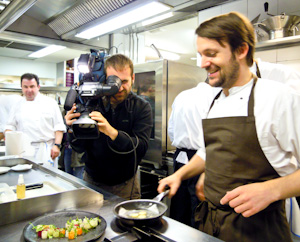 A couple of years ago few people had ever even heard about the New Nordic Cuisine. Then in 2003 along came a restaurant called Noma, whose front-figures (notably René Redzepi and Claus Meyer) brilliantly developed an all-Nordic concept, bringing a multitude of other chefs and people in the food business with them towards a common goal – to elevate the quality and diversity of the cuisines in the Nordic region.
A couple of years ago few people had ever even heard about the New Nordic Cuisine. Then in 2003 along came a restaurant called Noma, whose front-figures (notably René Redzepi and Claus Meyer) brilliantly developed an all-Nordic concept, bringing a multitude of other chefs and people in the food business with them towards a common goal – to elevate the quality and diversity of the cuisines in the Nordic region.
The New Nordic cuisine is about so much more than just substituting foreign ingredients with our own in well-known recipes; it’s about creating a foot-print of our ambition, a contemporary feeling, recreating the atmosphere of a place. This modern(ist) cuisine is not about showing off to the world or chasing the culinary pole position, but more important is showing ourselves the potential and diversity of our territory - things that has been neglected and forgotten throughout many years. We are no longer living in a region of gastronomic vacuum.
In this rejuvenated Nordic spirit lies also a collective wish to make this 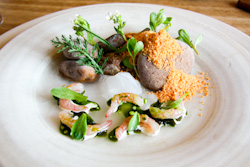 region a better place, food-wise, variety-wise and, of course, to become an influential food region, like so many of the other important food regions of the world. Only in a different way; where the strength of other cuisines lies in the diverse ways of manipulating the ingredients, the strength of Nordic cooking lies in the particularities of flavor in the produce, already at its source.
region a better place, food-wise, variety-wise and, of course, to become an influential food region, like so many of the other important food regions of the world. Only in a different way; where the strength of other cuisines lies in the diverse ways of manipulating the ingredients, the strength of Nordic cooking lies in the particularities of flavor in the produce, already at its source.
We can at least hope “la nouvelle cuisine nordique” has come to stay – a cuisine with a steady base built on healthy values, authenticity and genuine products.
Fascism on a plate?
It was with great surprise I recently read that René Redzepi and Claus Meyer were being accused of promoting fascism through their new Nordic cuisine. In a chronicle published in the Danish newspaper Politiken, sociology student Ulla Holm writes that she sees clear parallels between Noma’s “all-local” food philosophy and fascist ideologies. She writes about their food manifesto, which focuses on locally sourced ingredients with a clear Nordic identity, and make it sound like Redzepi and Meyer fiercely fierce despise anything that originates from south of the Danish-German border.
To me this is an outrageous accusation. Choosing and supporting local produce, doesn’t mean you are actively taking a stand against everything else. It’s not about exclusion, it’s not about stopping the import from other countries and it’s definitely not about elitism.
I see their work as a perfectly legitimate way (and necessary step) to get back on the right track and let regional products regain a decent value in our own eyes.
As this chronicle in the Danish newspaper proves, in the Nordic region we have a total freedom of press. Now can we have freedom of cooking?
And seriously Ulla Holm, is a waiter in a brown shirt a sure sign that a restaurant adheres to fascist beliefs? - as you imply in your chronicle.
Fast progress
For a great number of years, Nordic cuisine was, honestly now, pretty dull. Very few chefs actively searched for or honored regional ingredients – and it was taken for granted that quality ingredients came from overseas, from France, from Italy. And the techniques used were merely adapted from the French cuisine, techniques developed to work with French ingredients. In the first wave of inventive cooking in the Nordic region – foreign ingredients were simply substituted with local equivalents.
This of course was not a durable way of creating an original cuisine.
Nowadays there’s a contemporary progress in produce sourcing and liberty of technique.
One of the reasons why the new Nordic cuisine has developed fast and why it is considered highly innovative is the lack of strong traditions. Unlike Italian or French cooking we’re more flexible and less bound by ancient rules, do’s and don’ts.
Mad Foodcamp
The people behind Noma is in the process of creating a yearly Danish food festival in Copenhagen - Mad Foodcamp (Mad means food in Danish) - where chefs, foragers, scientists, food lovers, farmers and plant experts will meet up to taste, discuss, hold lectures, cook, organize workshops and share. The theme for the first edition of the festival during summer 2011 will be “the plant kingdom”. The goal with a festival of its kind is to bring producers, farmers, chefs and consumers closer together, with a common aim: better food for all. Let’s hope this helps promote further collective initiatives like this in the Nordic region.
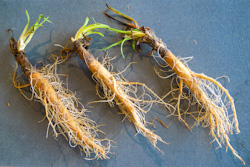
The luxury of seasonality
Nordic cuisine has been reborn in a new suit, and this time it’s all about non-luxury. Instead the luxury lies in the seasons, luxury is in availability – or the willingness of your chef to wake up at 5 am to go foraging on a windy beach.
The Nordic region’s colder weather, long winters but also long summer days - tend to give each crop a shorter season, but a clear boost in flavor. Seasons are more condensed, more crystallized, more varied. The seasons has always been a joy and at the same time a terrible burden – no one would survive the winters without having done enough stocking up on root vegetables, salting, drying, fermenting and a fair share of pickling. This is true even nowadays, at least if you don’t want to live off vegetables and fruit imported from halfway across the world. At a restaurant like Noma, with its purely Nordic food manifesto, you have to start thinking about winter already in early summer.
